- Home
- Ray Bradbury
Amazing Stories: Giant 35th Anniversary Issue (Amazing Stories Classics)
Amazing Stories: Giant 35th Anniversary Issue (Amazing Stories Classics) Read online
"FIRST IN SCIENCE FICTION SINCE 1926"
Amazing Stories
Fact and Science Fiction
Giant 35 Anniversary Issue
APRIL, 1961 Vol. 35, No. 4
Editors
CELE GOLDSMITH
Editorial Director
NORMAN M. LOBSENZ
An Amazing Stories Classics Publication
Produced by Digital Parchment Services.
Copyright © 1961 by Ziff-Davis Publishing Company.
Copyright © 1014 The Experimenter Publishing, Co.
ISBN: 9781615085606
INTRODUCTION TO THE 2014 EDITION
Given Amazing Stories' position as the first science fiction magazine in 1926, and given all the classic stories and celebrated writers it published, it seems inexplicable that no book publisher issued a selection of the best stories drawn from the magazine's pages until forty years after its debut. While much younger magazines like F&SF marked the decades with special tenth and fifteenth and twentieth anniversary issues that blazoned their longevity on the cover, none of Amazing Stories' publishers ever saw fit to mark such milestones until a full three decades had passed. Then, suddenly, readers were graced with landmark reprint 30th, 35th, and 40th anniversary issues, each containing twice the wordage of a regular issue, and featuring some of the most popular stories the magazine had ever published. The list of authors included such stellar names as Isaac Asimov, H. Beam Piper, Robert Block, Ray Bradbury, Edgar Rice Burroughs, plus once-famous authors like Eando Binder, Edmond Hamilton, Nelson Bond, Don Wilcox, Ray Cummings, David H. Keller, and Philip Francis Nowlan, and special features from luminaries like Hugo Gernsback, Robert A. Heinlein, Frank R. Paul, Philip Wylie, Sam Moskowitz, and even Salvador Dali.
Because of their contents, these very special "best of" issues have great entertainment, literary and historic value. Yet none of the three has ever been reprinted, despite the fact that readers and fans raved about them for years. We here at the new Amazing Stories are proud to rectify that error, beginning with this volume—one of the finest issues in the magazine's long career— which will be the first of a series of Amazing Stories Classics reprints of the best stories and novels that have appeared in the magazines over the years. Included are not only the stories themselves, but the original illustrations that accompanied them. So kick off your shoes, settle back in a chair, and get ready for hours of wondrous reading and visions of futures past that are still as spellbinding today as they were in the bygone days when the ink from their author's typewriter ribbons was still wet on the page. After all, how far wrong can you go when your escorts are Ray Bradbury (with a living spaceship), Edgar Rice Burroughs (with John Carter), Philip Francis Nowlan (with Buck Rogers), Eando Binder (with his much filmed "I, Robot"), and more?
Steve Davidson
Jean Marie Stine
2014
CONTENTS
FEATURES
EDITORIAL
GUEST EDITORIAL
COMPLETE NOVELS
JOHN CARTER AND THE GIANT OF MARS
By Edgar Rice Burroughs
ARMAGEDDON-2419 A.D.
By Philip Francis Nowlan
SHORT STORIES
I, ROCKET
By Ray Bradbury
DEVOLUTION
By Edmond Hamilton
OUT OF THE SUB-UNIVERSE
By R. F. Starzl
I, ROBOT
By Eando Binder
THE FLYING FOOL
By David H. Keller, M. D.
BONUS FEATURE
GALLERY OF THE COVERS FOR THE ISSUES OF AMAZING THAT THE STORIES IN THIS ANTHOLOGY CAME FROM
Cover: FRANK R. PAUL
EDITORIAL
35 YEARS are a long time. And when one dwells in the past history of a magazine—as we have done to prepare for you this 35th anniversary issue of Amazing Stories—one becomes aware of the debt that is owed to the past.
Obviously the present staff of Amazing can take no credit for this issue. We are the inheritors of a legacy. And we'd like to thank those from whom we inherit. Not only the authors and illustrators whose previous creations come alive again in these. pages; but all the men and women whose contributions over 35 years have enabled Amazing to live, to prosper, and to continue its efforts to publish the best science-fiction it can obtain.
More than writers and artists must be thanked. At this time, we at Ziff-Davis remember the editors who labored so devotedly; to them, too, we owe a debt.
And a special word of thanks is due to our founder, Hugo Gernsback, for his continued goodwill and cooperation, and for his guest editorial. To Frank R. Paul, dean of science-fiction artists, for the opportunity once again to enjoy his colorful and imaginative creations. To all the writers, publishers and agents who collaborated in making available the stories we offer you. And, last but far from least, to Sam Moskowitz, whose interest in and enthusiasm for science-fiction is as fresh and vibrant as ever. It is through his great store of knowledge and his tireless hours of work that we are able to bring you these outstanding reprints. In his introductions to the stories, Sam puts each one in literary and historic perspective.
In reading again the old stories by the giants of science-fiction; in being caught up in the "sense of wonder" that permeates them; in soaring with the expansive imaginations revealed in them—we can only hope that in future years Amazing will continue to publish stories that will become classics of their own time. That all our efforts will go toward this goal is our solemn promise to you. And may you all be with us for every anniversary from now on!
—Norman M. Lobsenz and Cele Goldsmith
GUEST EDITORIAL
Hugo Gernsback founded Amazing Stories in 1926. On this special occasion, "Mr. Science Fiction" takes a backward—and a forward look—at the magazine he created and the field that he fathered.
AS we look back over the vista of modern science fiction, we are struck by the fact that the outstanding stories in the field—the ones that endure—are those that almost invariably have as their wonder ingredient true or prophetic science.
It is these stories that arouse our imagination and make a lasting impression on us which succeeding years do not seem to obliterate.
Let us take only two authors, Jules Verne (1828-1905) and H. G. Wells (1866-1946), as an example. Both authors had a considerable output of true science fiction, with the accent on science. In the Encyclopaedia Britannica, top billing is given to only these Verne stories: Voyage to the Center of the Earth (1864); From the Earth to the Moon (1865); 20,000 Leagues Under the Sea (1869); The English at the North Pole (1870); Around the World in 80 Days (1872). All of these highly imaginative tales concern themselves with science, and, as the Britannica says: "The novels of Jules Verne are dreams come true, dreams of submarines, airplanes, television; they look forward, not backward. Therefore they are still the books of youth."
Wells' best and most enduring stories, too, were comparatively few of a large list. To quote the Britannica once more: "He was to clothe scientific speculation in the form of fiction." Here are some of Wells' outstanding science fiction efforts, both novels and short stories : The Time Machine (1895); The Stolen Bacillus (1896); The Invisible Man (1897); The War of the Worlds (1898); The Sleeper Awakes ( 1899); Tales of Space and Time ( 1899); The First Men in the Moon (1901).
Both Verne and Wells wrote a large variety of other stories, yet in my opinion and that of many authorities it is the science fiction content that makes them
enduring and historic—deservedly so.
Both of these illustrious authors had succumbed to the phenomenon of science fiction fatigue—the creative science distillate of the mind had been exhausted. New prophetic visions could no longer be generated.
Science fiction exhaustion is well known to every author of the genre; some succumb to it early, others late in their careers. It is a phenomenon only too well understood by all editors and publishers, who must cope with it. Nor is it any wonder that the science fiction output of nearly all authors who have ever tried it is so limited. Only those who have attempted it can know how difficult and exhausting the subject can become.
Verne and Wells continued writing until advanced ages, after they had written themselves out in science fiction themes. They then went into many other avenues of literature. To mention only one: Wells' famous The Outline of History (1920).
The true science fiction author must have a high order of inventiveness; he must have constant inspiration, intuitive and prophetic insight of the future; and, above all, he must know his science. No wonder that there are only a handful of first-rate science fiction authors.
When I brought out Amazing Stories monthly in 1926, I had accumulated considerable experience in science fiction. I had been publishing what I called "Scientifiction" in my various earlier magazines off and on, but not in a periodical entirely devoted to it.
In 1911 for my pioneer magazine Modern Electrics, I wrote a serial, Ralph 124C 41+. Then came The Scientific Adventures of Mr. Fosdick, by Jacque Morgan, who lasted for five stories. Later, in the Electrical Experimenter magazine, I wrote Baron Munchhausen's New Scientific Adventures, which went through 13 installments. Very good authors in the same magazine were George Frederic Stratton, Charles M. Adams, Charles S. Wolfe, all of whom wrote occasional stories.
Next to arrive was the celebrated Clement Fezandie, a most talented French-American who invented the famous humorous science fiction stories under the all-encompassing title of Dr. Hackensaw's Secrets, each with a fresh scientific concept. The first one, in the Electrical Experimenter for July, 1920, was entitled My Message to Mars. This titan of science fiction ended his output with story #43—a four-part serial which he called A Journey to the Center of the Earth, in my former magazine, Science and Invention, September, 1925, issue. Fezandie avowedly was an idea genius. In the color-powder-pigment business, he wrote for fun only and religiously sent back all checks in payment of his stories! He also wrote two more stories for Amazing Stories in 1926. I doubt if any science fiction author today can match his voluminous output for pure science fiction stories and unusual ideas.
There was also a nine-part serial, Tarrano the Conqueror, by Ray Cummings, in the same magazine, as was The Metal Emperor by A. Merritt, which ran from 1927 to 1928 through eleven installments.
Finally, we printed the Ark of the Covenant, by Victor MacClure, a serial published in 15 parts in Practical Electrics from Nov. 1924, to Jan. 1926.
From the short history above it will be seen that the concept of Amazing Stories in 1926 was not a haphazard undertaking. Its groundwork had been well prepared for 15 years! Few modern magazines that have endured were rehearsed so well and so long!
What is the future of science fiction in this country? For one who has been closely allied with it for 50 years, I would venture the opinion that, like the stock market, it has its ups and downs, its peaks and its valleys—yet, it, too, for the long pull, advances steadily over the years.
Because of the present unusual interest in science by our young generation, it would seem certain that there will be far more science fiction authors in the future than there ever were in the past. Hence there should be more and better stories, too.
I was much encouraged last October when, invited to speak on science fiction at the Massachusetts Institute of Technology, I noted the profound interest of the students in the subject. My talk lasted only 30 minutes, but the question and answer period took nearly 2 hours!
But what impressed me most was that a university of the calibre of MIT took science fiction so seriously. If now all other seats of learning will inaugurate science fiction societies, I can see only a vast and steady increase in this, the most exciting facet of literature in modern times.
All this augurs well for the future of Amazing Stories. May I therefore also congratulate its present owner, my good friend William Ziff, Jr.; its publisher, Michael Michaelson; and the talented editors of Amazing Stories, on the occasion of the 35th anniversary of this magazine.
And now a thought from our s-pun-sor. It may NOT be welcomed in certain quarters: There will come the future amazing day—now don't all laugh at once—when Amazing Stories will be composed, or perhaps outlined in detail, not by human authors, but by an electronic biocomputer-menograph (menos-mind). I also predict that this Autocerebration wonder is not likely to suffer from Science Fiction Fatigue nor Exhaustion.
—Hugo Gernsback
I, ROCKET
By Ray Bradbury
Illustrated by Brady
I, Rocket" was on several counts a milestone in the writing career of Ray Douglas Bradbury. It was his first sale to Amazing Stories, and the longest science fiction story he had written up to that time—May, 1944. It was also the first time an editor had considered one of his stories important enough to feature the title on the cover. Ray Bradbury had sold a few science fiction stories elsewhere, but they had made little impact. His reputation was predominantly confined to Weird Tales, which eventually published 25 of his fantasies of psychological horror, frequently echoing events of the author's childhood.
Two years before the publication of "I, Rocket," Ray Bradbury was still selling newspapers on the corner of Olympic and Norton, in Los Angeles. Despite the undeniable promise displayed by his published work he had received virtually no important critical acceptance either in or out of the science fiction world. The appearance of "I, Rocket," however, resulted in the following notice in Fantasy Times (today better known as Science Fiction Times) then published by Sam Moskowitz:
"Another new author who has continued to rise lately is Ray Bradbury. Remembering the years he plugged without even encouragement; knowing that he is the possessor of one of the world's largest collections of rejection slips; and knowing, too, just how poor some of his early stuff was, one can't help but feel just a tiny bit glad that he's made the grade at last. One hates to feel that patience, perseverance and hard work have no recompense in the long run. His shorts now appear in virtually every issue of Weird Tales. He had cover recognition on recent Amazing and Planet Stories, and while his work has not been sensationally received, many readers have found the style of writing he has developed easy to read and clever."
"I, Rocket" was an early example of the off-beat type of story that was to build Bradbury's then evolving reputation as a science fiction writer. In it we find a space adventure told from the viewpoint of the rocket ship. This is the first time this story has been reprinted since its original publication almost 17 years ago.
AT the rate things are coming and going it'll take a few hundred years to break me down into rust and corrosion. Maybe longer. In the meantime I'll have many days and nights to think it all over. You can't stop atoms from revolving and humming their life-orbits inside metal. That's how metal lives its own special life. That's how metal thinks.
Where I lie is a barren, pebbled plateau, touched here and there with pale weedy growths, a few hunched trees coming up out of planetoid rock.
There's a wind comes over the plateau every morning. There's rain comes in the twilight, and silence comes down even closer in the night. That's my whole life now, lying here with my jets twisted and my fore-plates bashed.
Somehow I feel I haven't fulfilled my destiny in toto. A rocket ship isn't built to lie on a hard gray plateau in the wind and rain—alone. After those trips through space it's almost too much to believe, that the rest of my days will be wasted here.
But while I'm rusting and wondering, I can think
it all over. How I came to be here, how I came to be built....
I've taken them all in their time, the crew; seen them wounded, crushed by centrifuge, or shattered by space-bombs; and once or twice I've had my rear-jets pounded off in a double-fisted foray: there's hardly a plate in my hull hasn't been welded again and again, not a chronometer in my control console hasn't been blasted and replaced.
But the hardest thing of all was replacing the men inside me. The little guys who ran around with greasy faces, yelling and fighting for air, and getting their guts frozen to their peritoneum every time I swung into an unexpected arc during the days when free gravity was experimental.
The little guys were hard to find, harder to replace after a particularly violent thrust between worlds. I loved the little guys, the little guys loved me. They kept me shining like a nickel moon, nursed me, petted me, and beat me when I deserved it.
From the very first I wanted to be of some help in the wild excursions from Earth to Deimos-Phobos coordinate Bases, the war moons held by Earth to strike against the Martians.
My birth-period, and the Base where I was integrated, skeleton, skin and innards, went through the usual birth-pains. It is a dim portion in my memory, but when the final hull was melted to me, the last rungway and console fitted to my hulk, the awareness was there. A metal awareness. The free electrical atom flow of metal come aware.
I could think and could tell nobody that I thought.
I was a war rocket. Fore and aft they placed their space-artillery nozzles, and weighted me with scarlet ammunition. I began to feel my purpose, expectantly, perhaps a bit impatiently.

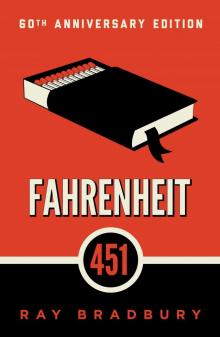 Fahrenheit 451
Fahrenheit 451 Zen in the Art of Writing
Zen in the Art of Writing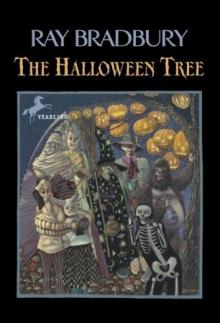 The Halloween Tree
The Halloween Tree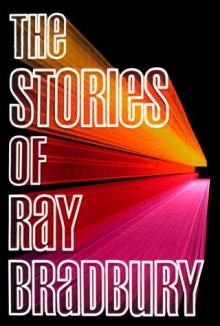 The Stories of Ray Bradbury
The Stories of Ray Bradbury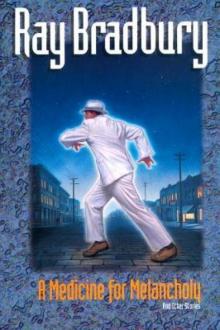 A Medicine for Melancholy and Other Stories
A Medicine for Melancholy and Other Stories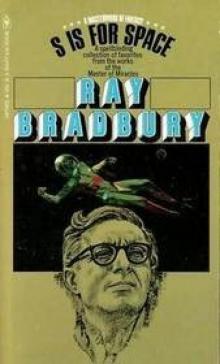 S Is for Space
S Is for Space The Martian Chronicles
The Martian Chronicles Futuria Fantasia, Winter 1940
Futuria Fantasia, Winter 1940 Farewell Summer
Farewell Summer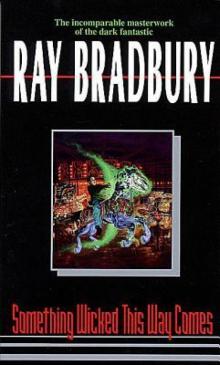 Something Wicked This Way Comes
Something Wicked This Way Comes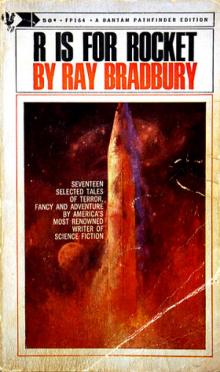 R Is for Rocket
R Is for Rocket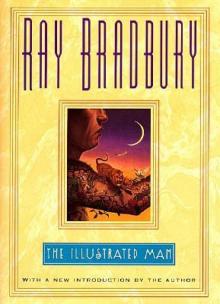 The Illustrated Man
The Illustrated Man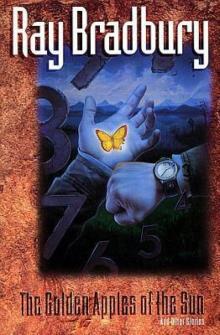 The Golden Apples of the Sun
The Golden Apples of the Sun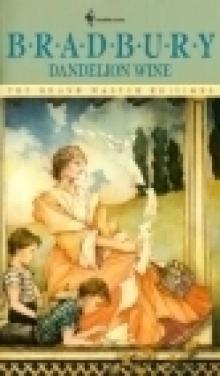 Dandelion Wine
Dandelion Wine The Cat's Pajamas
The Cat's Pajamas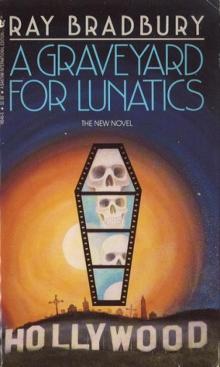 A Graveyard for Lunatics
A Graveyard for Lunatics The Playground
The Playground We'll Always Have Paris: Stories
We'll Always Have Paris: Stories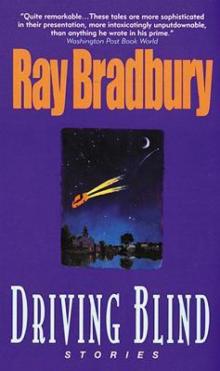 Driving Blind
Driving Blind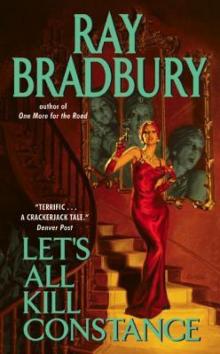 Let's All Kill Constance
Let's All Kill Constance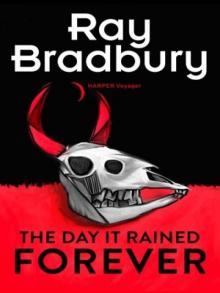 The Day It Rained Forever
The Day It Rained Forever The Toynbee Convector
The Toynbee Convector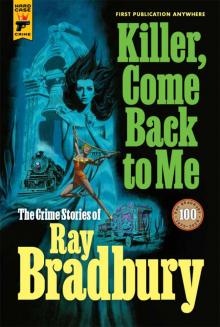 Killer, Come Back to Me
Killer, Come Back to Me I Sing the Body Electric
I Sing the Body Electric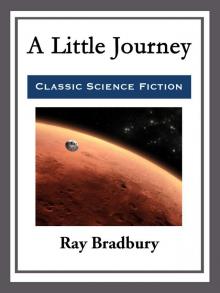 A Little Journey
A Little Journey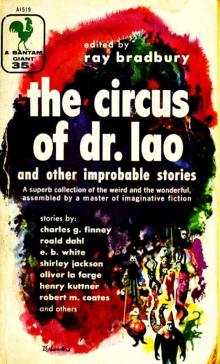 The Circus of Dr Lao and Other Improbable Stories
The Circus of Dr Lao and Other Improbable Stories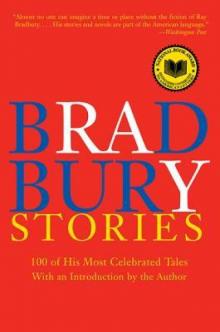 Bradbury Stories: 100 of His Most Celebrated Tales
Bradbury Stories: 100 of His Most Celebrated Tales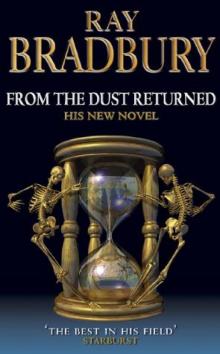 From the Dust Returned
From the Dust Returned Death Is a Lonely Business
Death Is a Lonely Business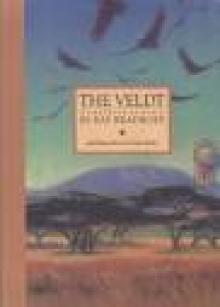 THE VELDT
THE VELDT One More for the Road
One More for the Road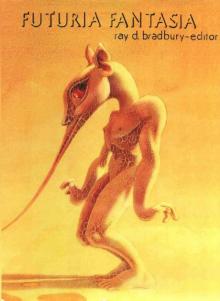 Futuria Fantasia, Summer 1939
Futuria Fantasia, Summer 1939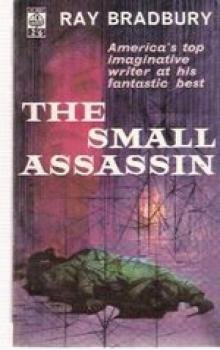 The Small Assassin
The Small Assassin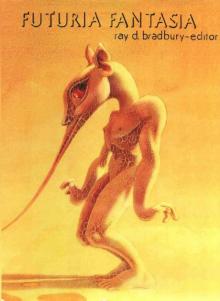 Futuria Fantasia, Fall 1939
Futuria Fantasia, Fall 1939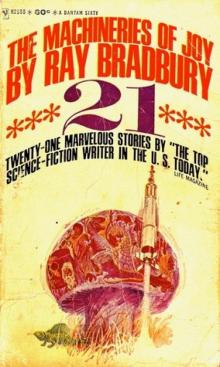 Machineries of Joy
Machineries of Joy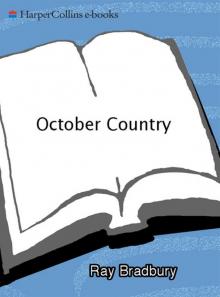 The October Country
The October Country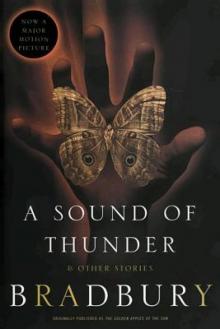 A Sound of Thunder and Other Stories
A Sound of Thunder and Other Stories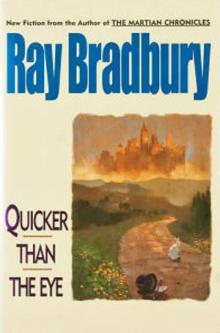 Quicker Than the Eye
Quicker Than the Eye Summer Morning, Summer Night
Summer Morning, Summer Night Yestermorrow
Yestermorrow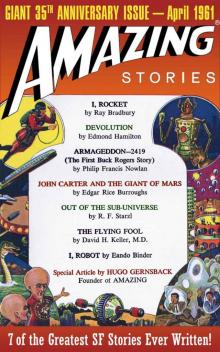 Amazing Stories: Giant 35th Anniversary Issue (Amazing Stories Classics)
Amazing Stories: Giant 35th Anniversary Issue (Amazing Stories Classics)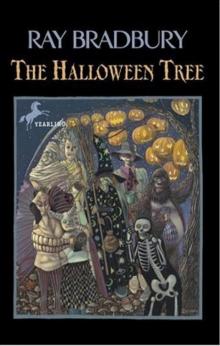 (1972) The Halloween Tree
(1972) The Halloween Tree Listen to the Echoes
Listen to the Echoes A Pleasure to Burn
A Pleasure to Burn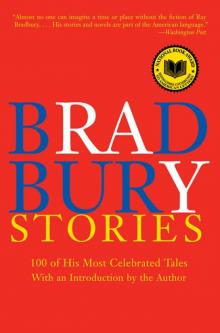 Bradbury Stories
Bradbury Stories Bradbury Speaks
Bradbury Speaks Ray Bradbury Stories Volume 2
Ray Bradbury Stories Volume 2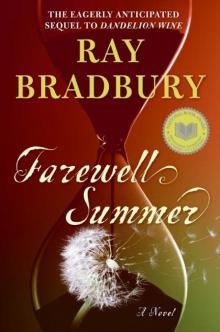 Farewell Summer gt-2
Farewell Summer gt-2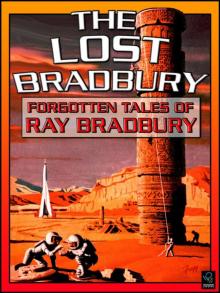 The Lost Bradbury
The Lost Bradbury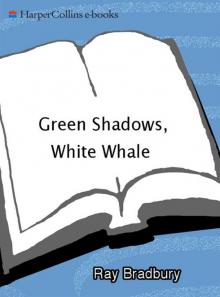 Green Shadows, White Whale
Green Shadows, White Whale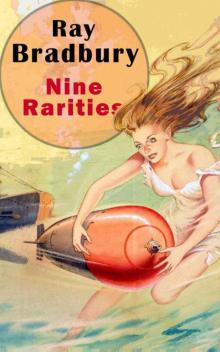 Nine Rarities
Nine Rarities The Fireman
The Fireman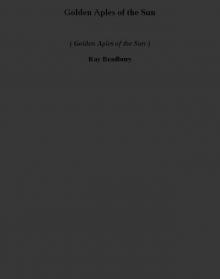 Golden Aples of the Sun (golden aples of the sun)
Golden Aples of the Sun (golden aples of the sun) We'll Always Have Paris
We'll Always Have Paris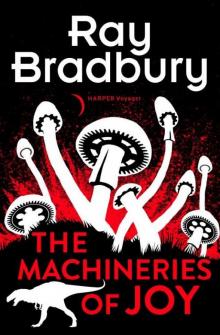 The Machineries of Joy
The Machineries of Joy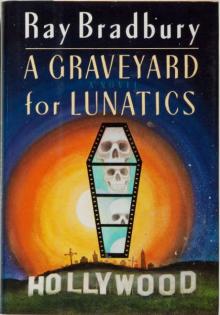 A Graveyard for Lunatics cm-2
A Graveyard for Lunatics cm-2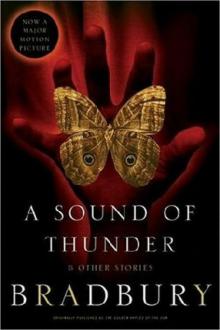 The Sound of Thunder
The Sound of Thunder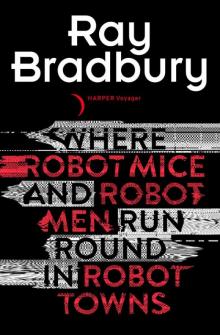 Where Robot Mice and Robot Men Run Round In Robot Towns
Where Robot Mice and Robot Men Run Round In Robot Towns